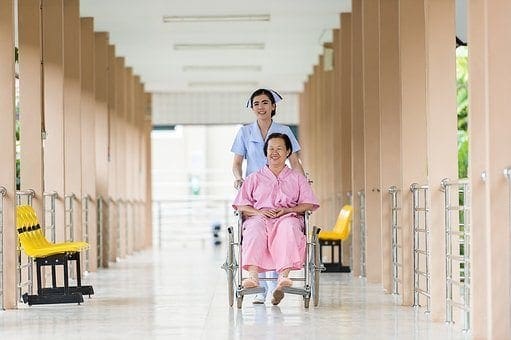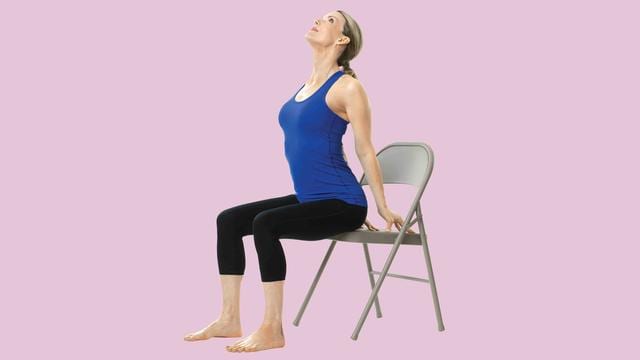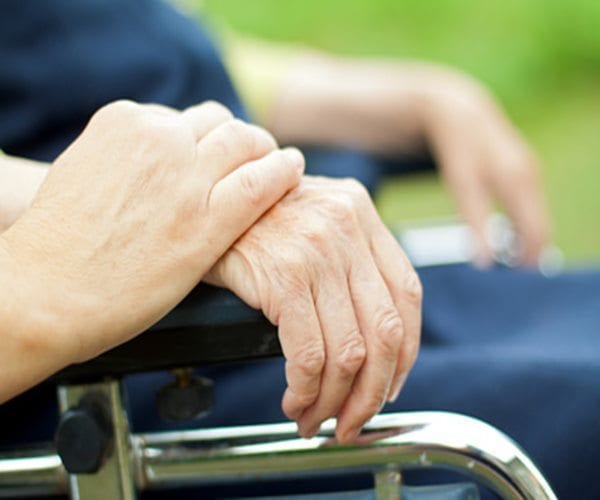Wellness
Clinic Wellness Team. A key factor to spine or back pain conditions is staying healthy. Overall wellness involves a balanced diet, appropriate exercise, physical activity, restful sleep, and a healthy lifestyle. The term has been applied in many ways. But overall, the definition is as follows.
It is a conscious, self-directed, and evolving process of achieving full potential. It is multidimensional, bringing together lifestyles both mental/spiritual and the environment in which one lives. It is positive and affirms that what we do is, in fact, correct.
It is an active process where people become aware and make choices towards a more successful lifestyle. This includes how a person contributes to their environment/community. They aim to build healthier living spaces and social networks. It helps in creating a person’s belief systems, values, and a positive world perspective.
Along with this comes the benefits of regular exercise, a healthy diet, personal self-care, and knowing when to seek medical attention. Dr. Jimenez’s message is to work towards being fit, being healthy, and staying aware of our collection of articles, blogs, and videos.

by Dr Alex Jimenez DC, APRN, FNP-BC, CFMP, IFMCP | Health News El Paso
(HealthDay News) — When a bedside alarm goes off in a child’s hospital room, anxious parents expect nurses to respond pronto.
That rarely happens, however, and a new study helps explain why.
Reasons Why Response Time In Question
Researchers found that nurses are usually quick to react when alarms are urgent. But, they’re slower to respond at the end of the workday or when they suffer from “chronic alarm fatigue.”
Also, having parents present doubled the response time on average, the study found.
But, delayed response time didn’t threaten any of the 100 patients evaluated in the study, the researchers said. And just half of 1 percent of more than 11,000 alarms analyzed were deemed “actionable,” or crucial.
“The nurses were overall doing a great job predicting which alarms were going to be important,” said study lead author Dr. Christopher Bonafide, an assistant professor of pediatrics with the Children’s Hospital of Philadelphia. “Their intuition was correct.”
The high number of false alarms in U.S. hospitals has led to “alarm fatigue” among nurses. As a result, the Joint Commission — the organization that accredits American hospitals — issued new guidelines for managing alarm monitors.
The beeps and buzzes alert staff to medical problems facing patients such as high heart rates, dips in oxygen levels in the blood and dangerous heartbeat patterns, Bonafide said.
Too Many False Alarms
But, many false alarms are caused simply by babies moving around and disrupting sensors, he said.
“When an alarm goes off and the nurse is already in the patient’s room, they can immediately look up, check on the patient, and make sure everything is OK,” Bonafide said. “When a nurse isn’t in the room, some hospitals like ours have the ability to send them a text message to the phone that they are carrying.”
For this study, researchers analyzed video of 38 nurses caring for 100 patients at Children’s Hospital of Philadelphia from 2014-2015.
Almost all of the 11,745 beeps and buzzes that sounded were valid. And 50 were deemed critical, “the important ones we would not want anyone to miss,” Bonafide said. Nurses responded in about a minute, on average, to these alarms.
However, overall, half of the total alarms took 10.4 minutes or more to address, the study found.
Years on the job and caseload accounted for some differences in response time.
“Nurses with under one year of experience responded faster than nurses with one or more years’ experience,” Bonafide said. “Nurses taking care of just one patient responded faster than those caring for more than one patient. And for each hour that passed in a nurse’s shift, their response time got a little bit slower.”
Other factors appeared to contribute, too.
“If family members were absent from the bedside, response time was faster than if parents were there,” he said. The median response time was six minutes when family members weren’t there, and 12 minutes when they were.
Also, “more complex” patients got faster responses, Bonafide said. “And patients who had prior alarms that required interventions to be taken got faster responses than those who had not had those experiences.”
Marjorie Funk, a professor at Yale University School of Nursing, praised the study. She said the findings shouldn’t worry parents about leaving their child’s side at hospitals.
“Alarms for serious events sound different, and nurses respond immediately,” Funk noted. “Other alarms may require their attention, but they can finish what they are doing for another patient before responding or can ask a colleague to respond.”
Bonafide said there are no guidelines that tell nurses how quickly they should response to various alarms. But, he thinks the system needs improvement.
“There’s quite a lot we can do to improve the safety and performance of these systems and make them work for us and provide truly useful information that helps nurses identify patients who are getting into trouble,” he said.
When a child is hospitalized, Bonafide and Funk agreed that it’s appropriate for parents to ask questions. These might include asking physicians and nurses, “Why is my child being continuously monitored? What problems are you looking for?” and “What should I do if an alarm goes off?”
The study appears in the April 10 issue of JAMA Pediatrics.
SOURCES: Christopher Bonafide, M.D., assistant professor, pediatrics, Children’s Hospital of Philadelphia; Marjorie Funk, Ph.D., RN, professor, nursing, Yale University School of Nursing, New Haven, Conn.; April 10, 2017, JAMA Pediatrics
News stories are written and provided by HealthDay and do not reflect federal policy, the views of MedlinePlus, the National Library of Medicine, the National Institutes of Health, or the U.S. Department of Health and Human Services.

by Dr Alex Jimenez DC, APRN, FNP-BC, CFMP, IFMCP | Health, Nutrition, Wellness
It�s spring and many people will be heading back to the gym in the hope of busting cellulite, a seemingly unshakeable curse for many women. However, cellulite, which has both genetic and hormonal causes, can be improved with a comprehensive long-term strategy. Here are a few facts and fictions about the dreaded �orange-peel effect� before you get started.
Exercise Gets Rid Of Cellulite
FALSE. Unfortunately, exercise alone isn�t enough to shift those lumpy fatty deposits anchored deeply under the skin. This type of fat corresponds to metabolized fat from food and genetic fat stores often found around the buttocks and thighs. However, exercise (walking, running, water biking, skipping) forms part of an overall cellulite-busting strategy, giving a real boost to venous and lymphatic circulation.
Slim women have cellulite too! Losing weight by forcing yourself to follow a drastic and highly restrictive diet won�t solve the problem. (Shutterstock)
Hormonal Balance Affects Cellulite
TRUE. Harmonizing your hormonal balance could help reduce and halt the further development of adipocyte fat cells. A lack of progesterone can often create a cellulite effect. Borage oil and chaste tree are herbal remedies that are recommended for boosting the hormone progesterone. Changing to a contraceptive pill with a different dose of hormones can also be an option. Ask your health care provider for more information.
Cutting Calories Is The Only Way To Get Rid Of Cellulite
FALSE. Slim women have cellulite too! Losing weight by forcing yourself to follow a drastic and highly restrictive diet won�t solve the problem. In fact, it can prove counterproductive, since you also risk losing muscle mass and accentuating any cellulite buildup.

A Mediterranean diet based on foods rich in antioxidants (fruit and vegetables, seeds, nuts, wholegrain cereals) is the best weapon of mass destruction in the fight against lumpy deposits. (Shutterstock)
The Mediterranean Diet Is The Most Effective
TRUE. Cellulite, by definition, is an inflammatory condition. A Mediterranean diet based on foods rich in antioxidants (fruit and vegetables, seeds, nuts, wholegrain cereals) is the best weapon of mass destruction in the fight against lumpy deposits. Foods containing fast-acting sugars, with high glycemic indexes, should generally be avoided because they promote the storage of fat and cause insulin levels to spike. Watch out for hidden salt too, which is often responsible for water retention. Avoid soup in the evening and fill up on protein.
Herbal Remedies Can Help Tackle Cellulite
TRUE. The key active ingredients in certain plants can help the body to eliminate toxins, flushing out tissue that�s full of water and fat. These include dandelion, birch, fennel, artichoke, black radish, fumaria, red vine leaf, witch hazel and ginkgo biloba, which can help boost blood flow back to the heart and aid the lymphatic system. Drinking lots of water will also stimulate digestive transit to help get rid of inflammatory toxins.

Call Today!
Follow @htlifeandstyle for more.

by Dr Alex Jimenez DC, APRN, FNP-BC, CFMP, IFMCP | Arthritis, Fitness, Wellness
“Oh, my aching back!” I can’t tell you how many of my students have back issues. And it’s no wonder, considering most of us spend our days tied to our desk chairs and parked in the same position in front of our screens hour after hour. The problem: Sitting for prolonged periods can cause or exacerbate back issues. When we’re stuck in this position, our hip flexors shorten in front and pull on our lower back. Not to mention, constant slouching can lead, over time, to compressed disks. That’s why it’s crucial to stretch your back every day. Here, four moves you can do right in your office.
RELATED: How Chair Yoga Can Help Your Arthritis
1. Backbend Arch
Start seated at edge of chair, placing hands behind you with fingers facing away from hips. Prop yourself up on fingertips, drawing sacrum in and up to lift lower back. Follow backbend all the way up chest to shoulder blades and open up entire front body. Hold and breathe for 8 to 10 breaths, then release.

2. Cat/Cow
Sit at edge of chair with feet flat on the floor. Place hands on knees and inhale, lifting chest and sticking hips out behind you. Lift gaze, open chest, and gently squeeze shoulder blades together (A). On an exhale, round chest, scoop in belly, and curl tailbone under as you drop head toward sternum (B). Repeat for a series of 10 cycles.
RELATED: 10 Yoga Poses to Do at Your Desk

3. Lower-Back Circles
Sit with feet hip-width apart and hands resting on knees (A). Inhale, then begin circling torso clockwise, making sure to initiate movement from base of spine (B). Complete 8 to 10 rotations. Stop and then repeat the motion, this time circling in a counterclockwise direction. Continue alternating for 2 to 3 minutes.

4. Roll-Downs
Sit with feet hip-width apart and hands hanging at sides (A). From head, start rounding down through spine (B). Exhale, letting forehead release forward and the weight of your head bring you over until top of head is by thighs (C). Inhale; slowly start stacking vertebrae as you round up to sit. Draw belly button to spine to protect back, and feel the articulation as you round up. Continue rolling down and up for 5 to 8 cycles.
Pin this entire workout for later:

Adapted from Chair Yoga: Sit, Stretch, and Strengthen Your Way to a Happier, Healthier You by Kristin McGee ($19; amazon.com). Copyright 2017 by Kristin McGee. Reprinted by permission of William Morrow, an imprint of HarperCollins Publishers.

by Dr Alex Jimenez DC, APRN, FNP-BC, CFMP, IFMCP | Natural Health, Veterans, Wellness
Hundreds of thousands of veterans of the Persian Gulf War returned home with puzzling health issues that doctors couldn’t explain. Now, 25 years later, Gulf War Illness (GWI) continues to affect 25-32 percent of the 700,000 U.S. veterans who served in the 1990-1991 war.
The condition is characterized by symptoms such as chronic headache, cognitive difficulties, debilitating fatigue, widespread pain, respiratory problems, sleep problems, gastrointestinal problems, and other unexplained medical abnormalities.
Twenty years of scientific research has traced these symptoms to Gulf War chemical exposures and the drugs taken during deployment that were meant to prevent or counteract these exposures. However, the vast majority of these studies have focused on neurological effects, but none have fully explained the body’s pathways GWI uses to affect the brain.
Now, a study from the University of South Carolina has found a gastrointestinal link that could not only help explain the health issues facing veterans, but may also point to new treatment options.
Researchers found that the chemicals, etc. that veterans were exposed to altered the microbiome — the bacteria that inhabit the gut. The affected microbiota then produce endotoxins, which pass through a thinned lining of the gut (called a leaky gut) and into the blood where they circulate throughout the body.
These compounds trigger an inflammatory response that, in turn, initiates several neurological abnormalities commonly observed in GWI.
“Humans and animals have specific types of bacteria that help aid various physiological processes, including digestion, absorption, immunity and gut integrity, and when external factors change the bacterial composition in our digestive systems, we have problems,” says researcher Saurabh Chatterjee. “Obesity, metabolic syndrome, inflammatory bowel syndrome, and liver disease have already been linked with changes in bacterial composition of the gut.”
The study showed that not only did exposures to the suspected causes of GWI lead to inflammation in the intestines, they also lead to inflammation in the brain.
“Usually, the gut is very selective about letting only certain elements from what we eat and drink into our blood — thanks to good bacteria,” Chatterjee explained. “But when the composition changes due to an increase in certain bad bacteria, this causes disruption to the mucosal lining of the intestinal walls — leading more intestinal contents to leak into the blood.”
Once in the blood, the toxins travel throughout the body and affect different organs, including the brain. Once in the brain, the toxins cause the inflammation and neurological symptoms that previous studies have extensively linked to GWI.
“We know that many diseases like obesity, liver disease, and inflammatory bowel syndrome can be cured or at least decreased by consuming good bacteria, like probiotics,” Chatterjee said. “Now that this connection has been established, it opens the door to new studies where GWI patients take probiotics for a longer period of time and, hopefully, see improvement in symptoms connected with metabolic syndrome, gastrointestinal disturbances, and maybe even neuroinflammation.”
Recent studies have indicated that gut bacteria have an impact on a wide range of health issues. UCLA researchers found that mice fed beneficial bacteria produced microbes known to prevent cancer. Researchers suggested ingesting probiotics like yogurt or probiotic supplements could help prevent cancer from developing.

by Dr Alex Jimenez DC, APRN, FNP-BC, CFMP, IFMCP | Natural Health, Wellness
Surgery is a common approach to treat carpal tunnel syndrome. But, physical therapy may work just as well, a new study indicates.
Researchers found that physical therapy — particularly so-called manual therapy — improved hand and wrist function and reduced pain as effectively as a standard operation for the condition.
Moreover, after one month, physical therapy patients reported better results than those who underwent surgery.
“We believe that physical therapy should be the first therapeutic option for almost all patients with this condition,” said lead study author Cesar Fernandez de las Penas.
“If conservative treatment fails, then surgery would be the next option,” said de las Penas, a professor of physical therapy at King Juan Carlos University in Alcorcon, Spain.
Also, one extra benefit of therapy over surgery may be cost savings, he noted.
Carpal tunnel syndrome occurs when the median nerve, which runs from the forearm into the palm of the hand, becomes squeezed at the wrist. It often arises from repetitive motions required for work, such as computer use or assembly line work.
Symptoms usually start gradually, with patients noticing numbness and weakness in the hand and wrist.
Surgery for the condition generally involves cutting a ligament around the wrist to reduce pressure on the median nerve, according to the U.S. National Institutes of Health.
For this study, de las Penas and his colleagues followed 100 women from Madrid who had carpal tunnel syndrome. Half were treated with physical therapy and half underwent surgery.
For three weeks, the therapy patients received weekly half-hour manual therapy sessions — meaning therapists only used their hands. The therapists focused on the neck and the median nerve. They also applied manual physical therapy to the shoulder, elbow, forearm, wrist and fingers. On their own, patients performed neck-stretching exercises at home.
After one month, the therapy group reported greater daily function and greater “pinch strength” between the thumb and forefinger compared to the surgery patients. After three, six and 12 months, however, improvements were similar in both groups. All participants experienced similar reductions in pain.
Study co-author Joshua Cleland is a professor with the physical therapy program at Franklin Pierce University in Rindge, N.H. “Manual physical therapy may be just as beneficial in improving function and symptom severity as surgery despite the severity of their condition,” he said, noting that 38 percent of those in the therapy group had “severe” carpal tunnel syndrome.
“These manual physical therapy techniques are commonly used here in the United States as well and should become a standard of practice for physical therapists working with patients who have carpal tunnel syndrome,” Cleland said.
Dr. Daniel Polatsch is co-director of the New York Hand and Wrist Center at Lenox Hill Hospital in New York City. He treats several hundred cases of carpal tunnel syndrome each year, of which 15 to 20 percent require surgery.
Treatment should be decided on a case-by-case basis, Polatsch said. Mild cases may be treated with conservative approaches that can include splinting, injections, therapy and activity modification, he added.
“Surgery is necessary when there is muscle weakness or atrophy from the nerve being compressed at the wrist,” he said.
Polatsch added that this type of surgery is generally safe and effective.
Still, operations can have complications, said Cleland. He cited a previous research finding that “approximately 25 percent of individuals undergoing surgery for carpal tunnel syndrome experience treatment failure with half of those requiring an additional surgical procedure.”
According to the researchers, almost half of all work-related injuries are linked to carpal tunnel syndrome. And, more than one-third who undergo surgery for the condition are not back at work eight weeks later.
Because this was a small study focusing only on women, the study authors said that future studies need to examine men.
The study results were published in the March issue of the Journal of Orthopedic & Sports Physical Therapy.

by Dr Alex Jimenez DC, APRN, FNP-BC, CFMP, IFMCP | Diets, Fitness
The types of cooking oils you eat may be sabotaging your health, making you lazy and setting you up to develop Type 2 diabetes, says a Canadian researcher.
Consuming high levels of polyunsaturated fatty acids (PUFAs) but not monounsaturated fatty acids (MUFAs), can make you lazy and fat, especially if you’re a woman, says Sanjoy Ghosh, a professor at the University of British Columbia’s Okanagan campus
For decades, heart disease was linked to saturated fats, which are found in meats and in full-fat products such as whole milk and butter. That belief caused the deliberate removal of saturated fatty acids from our diets, replacing them with MUFAs, found in avocado, nuts, seeds, and olives, and PUFAs, found in commonly used oils such as corn, sunflower, cottonseed, soybean, and canola. PUFAs are found in almost all convenience foods, including potato chips, cookies, cakes, and crackers.
Ghosh and his collaborator, UBC biologist and data analyst Jason Pither, examined data from 21 European countries. First, they studied pre-teen girls. Second, they examined the blood glucose levels of adult women. They also included other details such as the amount of time they spent watching television.
They concluded that there was a clear connection between the consumption of polyunsaturated fats and an increase in sedentary behavior, especially in the pre-teens, and an increase in diabetes among women.
“This data is extremely significant,” says Ghosh. “Nobody has made this connection and it’s time for an intervention. And if someone is beginning an exercise program without taking a close look at the fats, especially PUFA they are consuming, or changing what they’re eating, then it might be doomed to failure.”
The study was published in the Journal of Nutritional Biochemistry.
Recent studies have found that switching saturated fats for polyunsaturated fats didn’t lower the risk of heart disease — in fact, it may have raised it. A 2016 study examined the records of more than 9,400 people and found that while swapping saturated fats for vegetable fats like corn oil reduced cholesterol levels by 14 percent, it didn’t improve survival. In fact, those whose cholesterol was reduced the most had the highest risk of dying when compared to a control group that ate a diet high in saturated fats.

by Dr Alex Jimenez DC, APRN, FNP-BC, CFMP, IFMCP | Diets, Fitness
Being physically inactive raises the risk of losing the ability to perform activities of daily living – both before and after a stroke – according to results from a long-term U.S. study.
“Physical activity reduced the risk of dependence in both basic activities of daily living (for example, dressing and getting across a room) as well as instrumental activities of daily living (for example, managing money or grocery shopping), which are considered to be more cognitively demanding,” said lead author Dr. Pamela M. Rist from Brigham and Women’s Hospital and Harvard T.H. Chan School of Public Health in Boston.
“These instrumental activities of daily living can be important determinants of quality of life among stroke patients, so it is important to find factors which reduce the risk of dependence in these activities as well as in basic activities of daily living,” she told Reuters Health by email.
Rist’s team studied 18,117 individuals participating in the national Health and Retirement Study in an effort to find out whether physical activity and body mass index (BMI), a common measure of overweight and obesity, could predict disability.
During 12 years of follow-up, the amount of physical activity people did was not associated with the risk of stroke, but it was associated with the likelihood of being independent three years after a stroke.
Those who were physically inactive at baseline were significantly less likely to be independent at that point, compared with those who were physically active at baseline.
Somewhat surprisingly, this difference between inactive and active stroke survivors was also evident three years before their strokes, researchers report in the journal Neurology.
Obesity, in contrast, was associated with an increased risk of stroke, but it was not associated with loss of independence during the follow-up period, regardless of whether an individual suffered a stroke.
“Individuals can reduce their risk of dependence before and after stroke events by being physically active, which in our study was defined as participating in vigorous physical activity at least three times per week,” Rist said.
The researchers recommend further study to clarify whether increases in physical activity might also improve outcomes after a stroke.
















